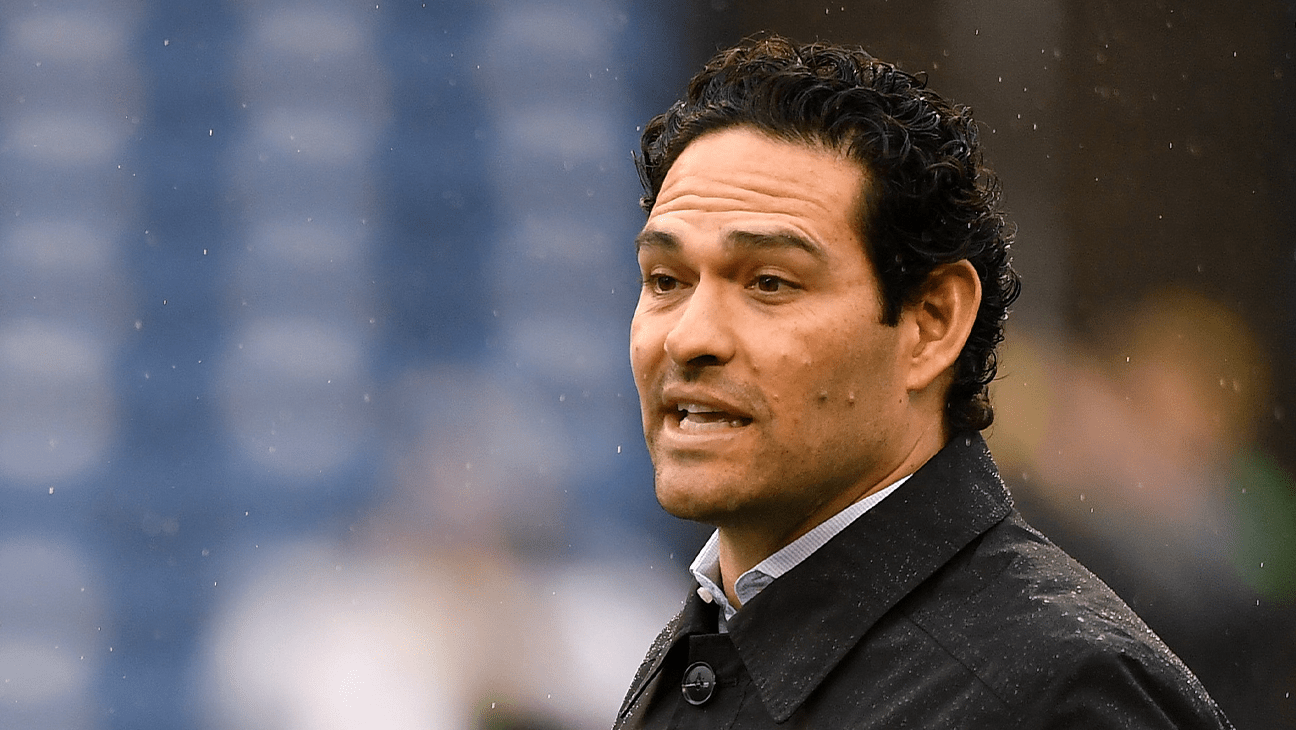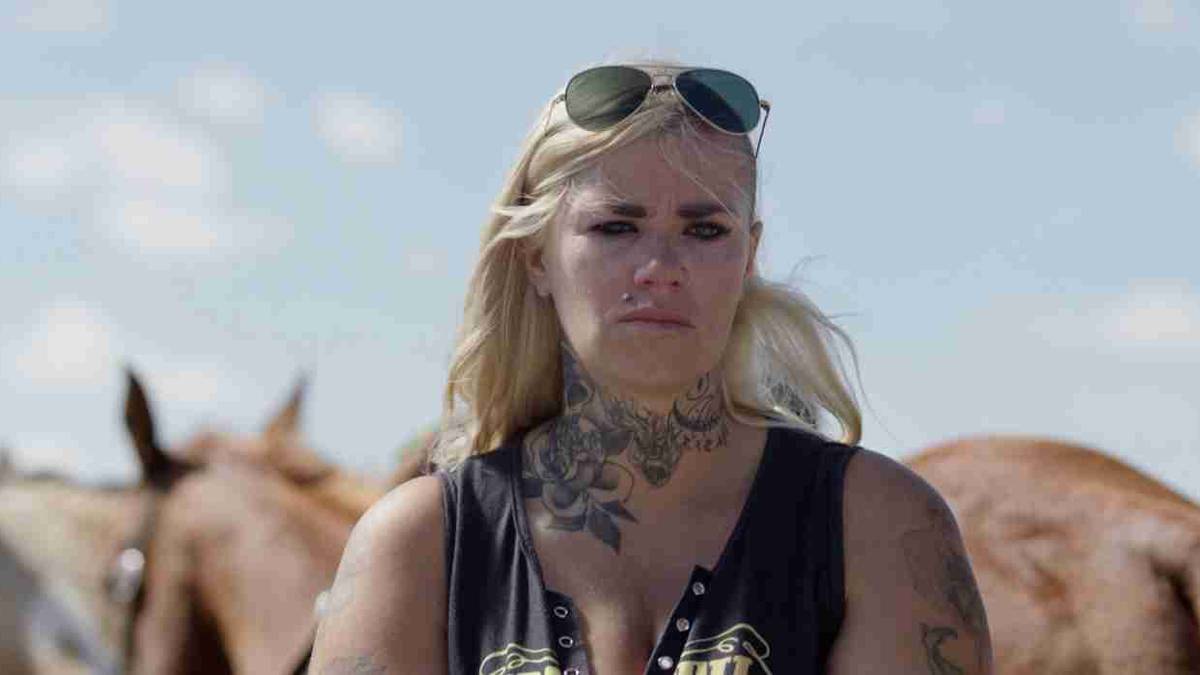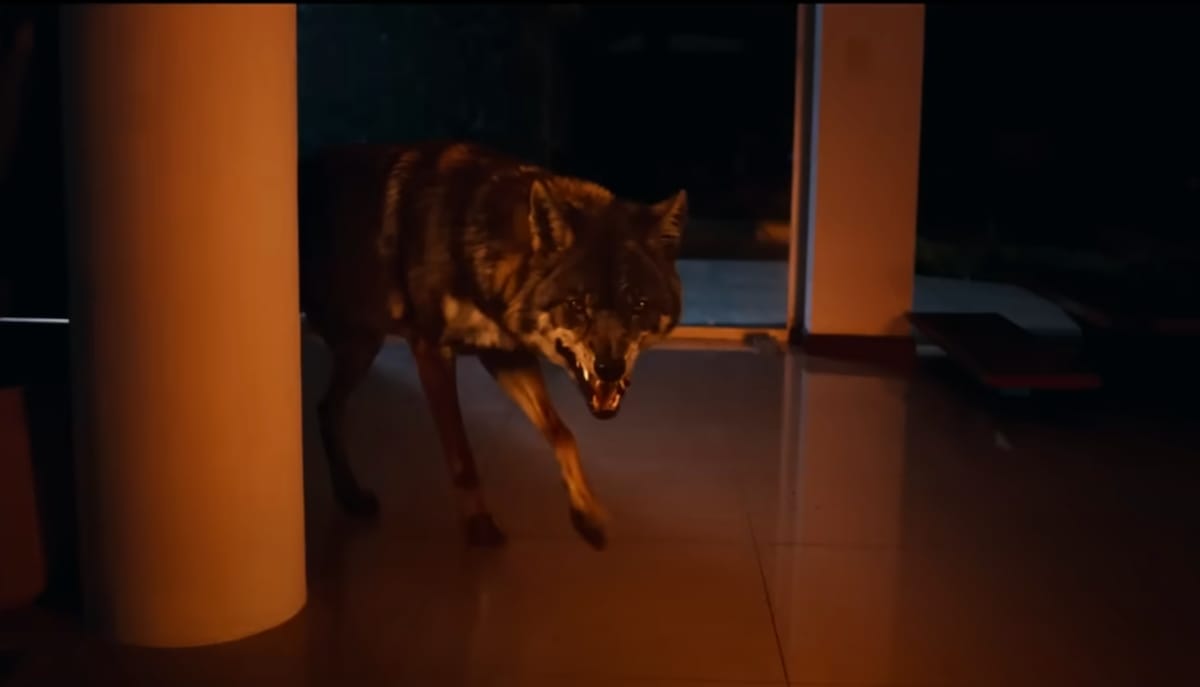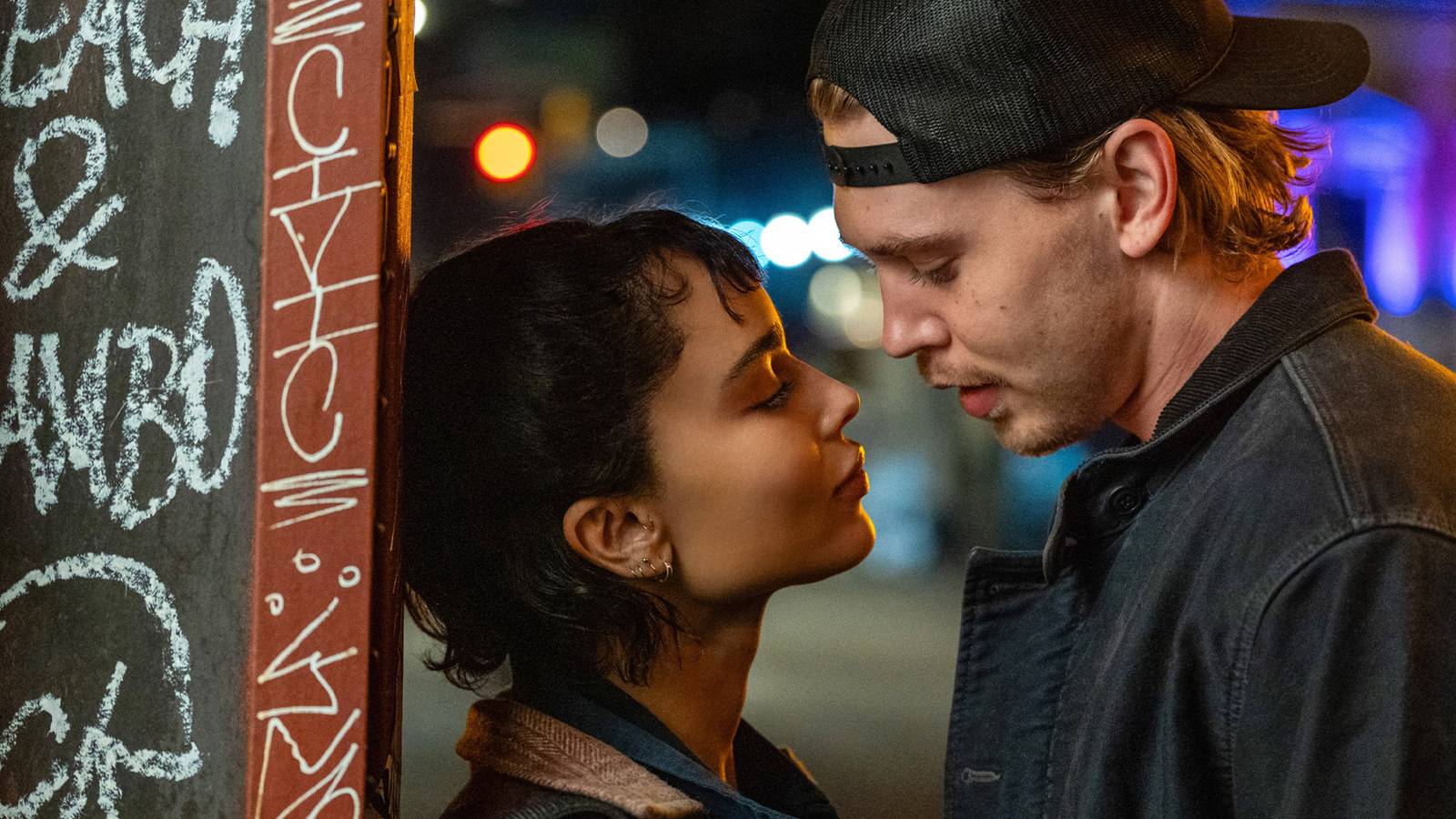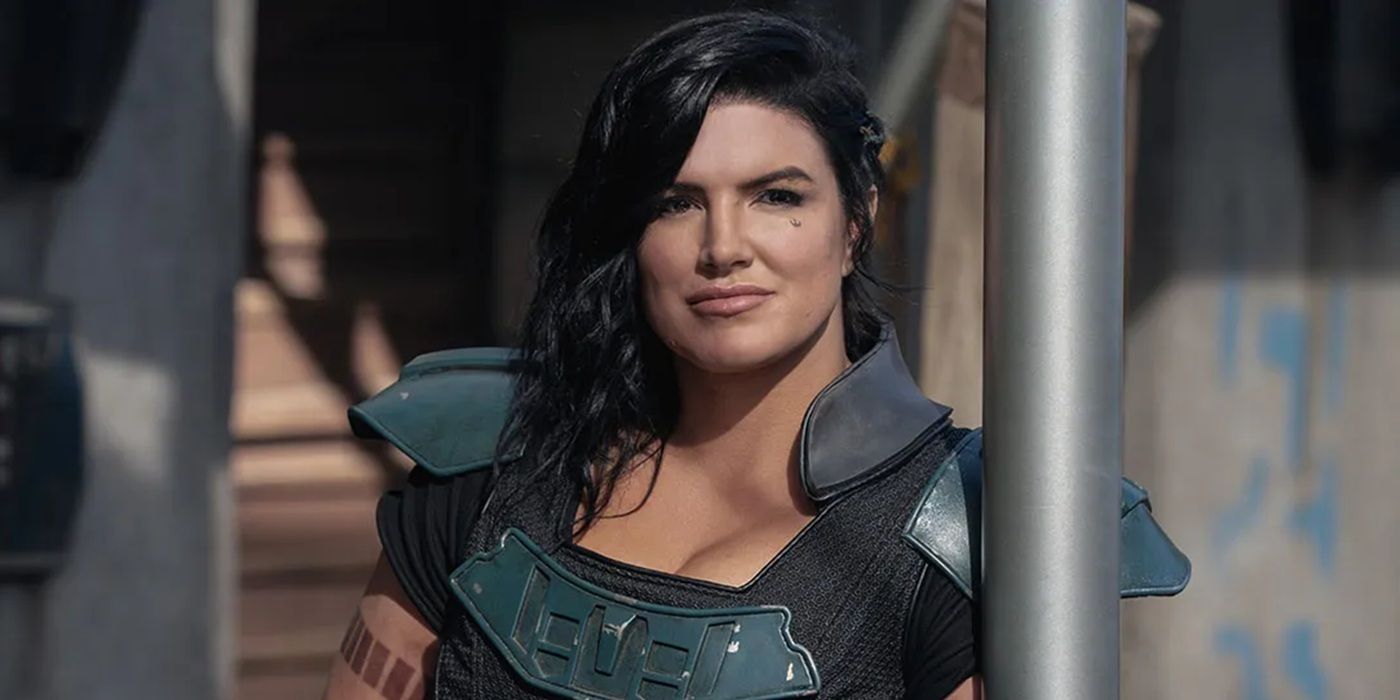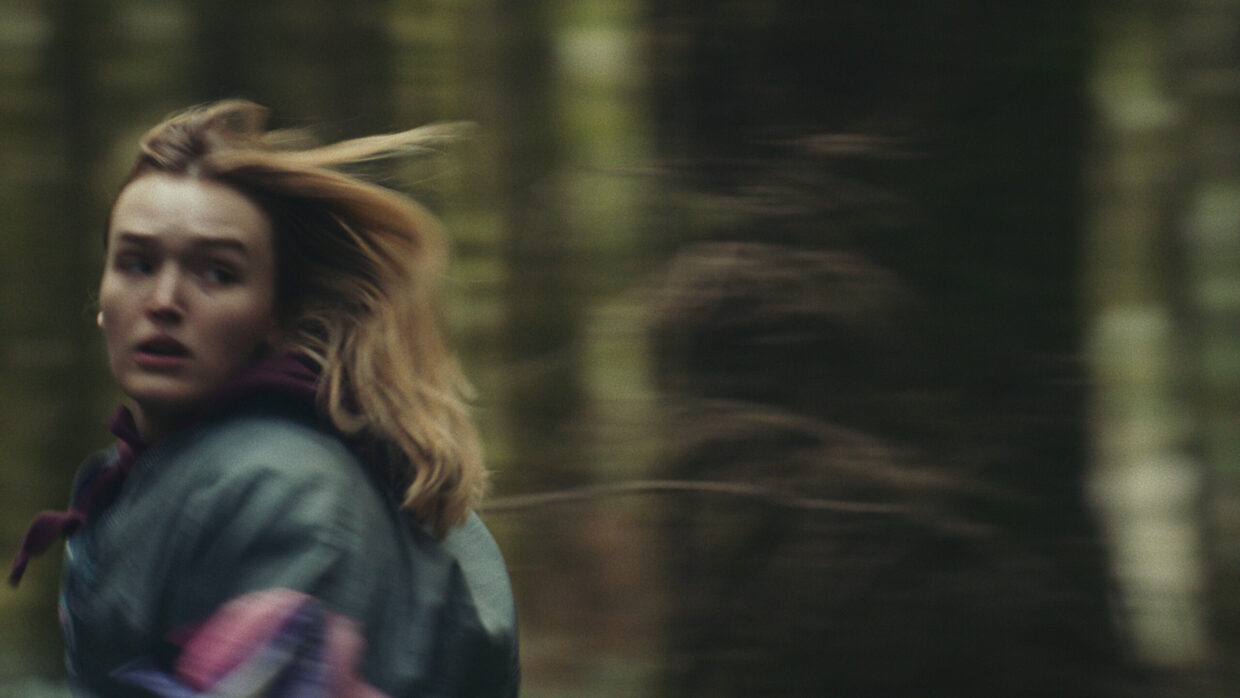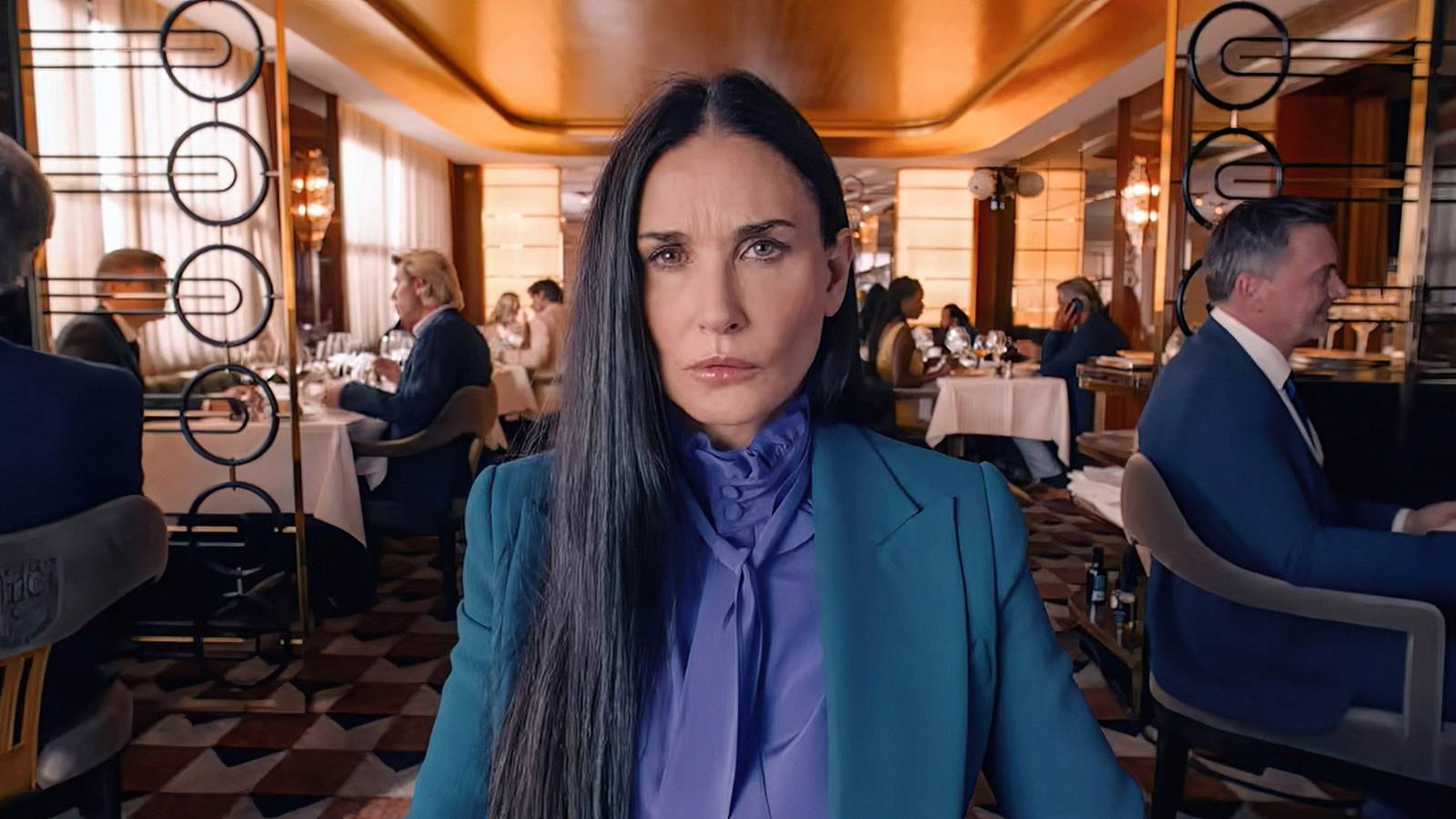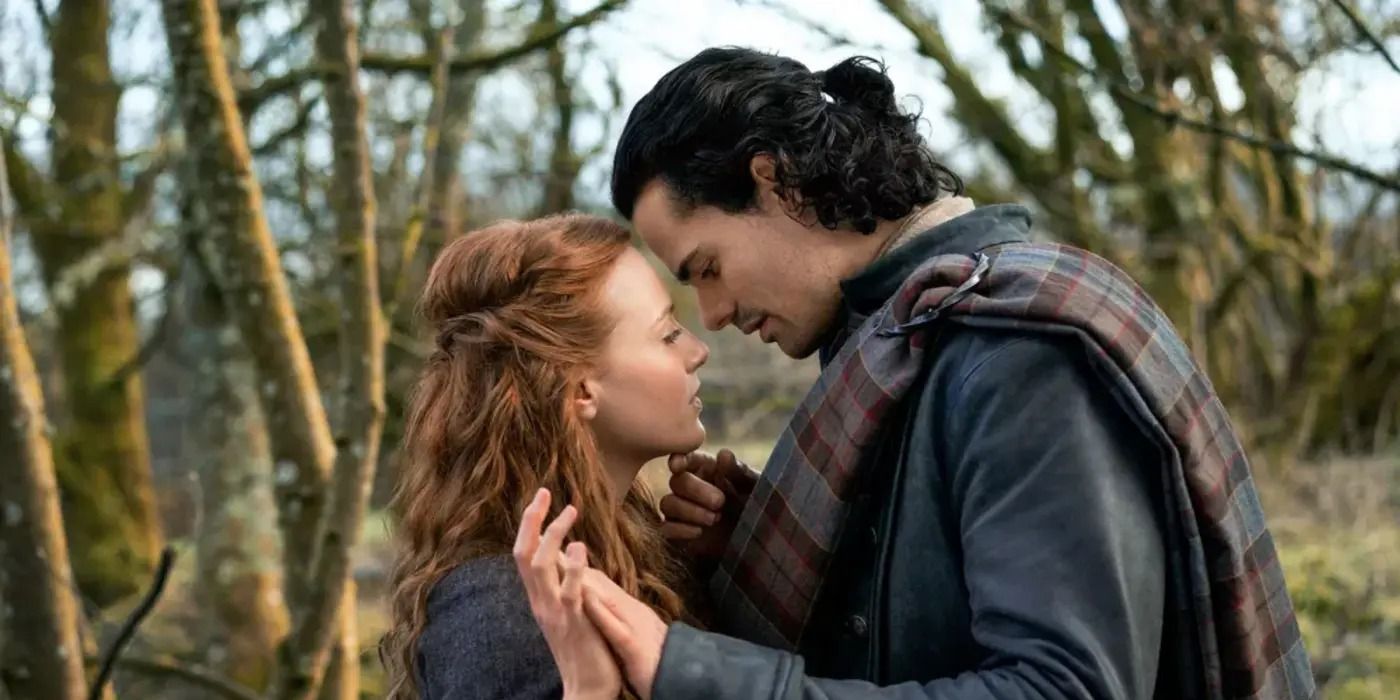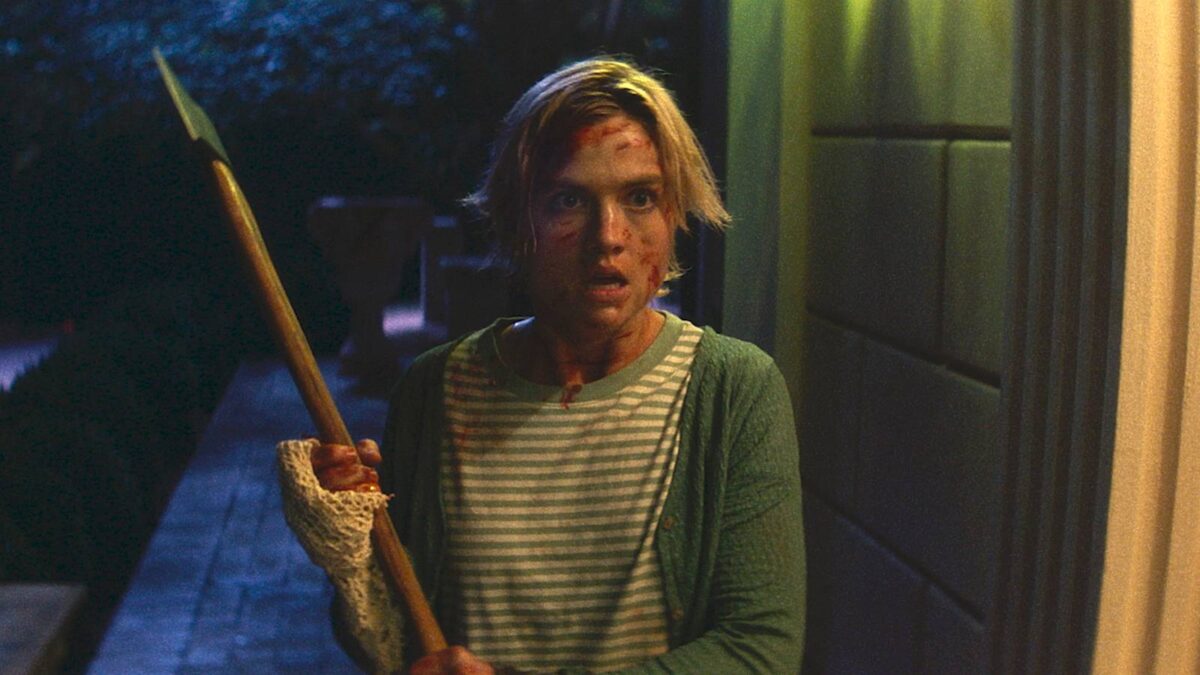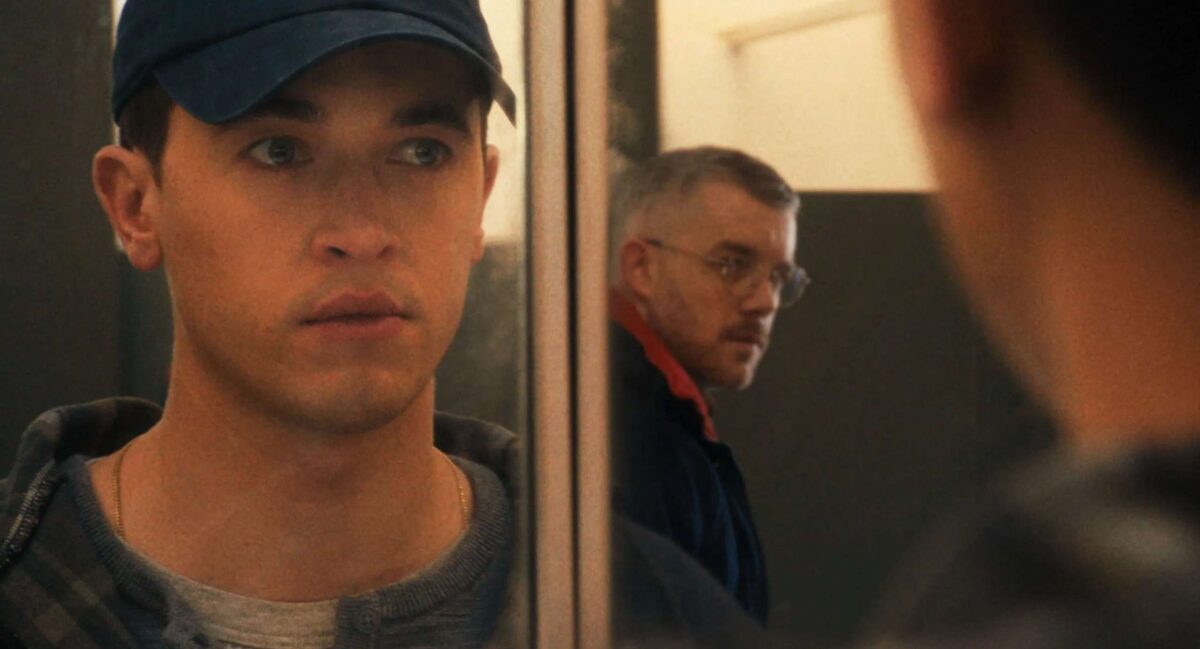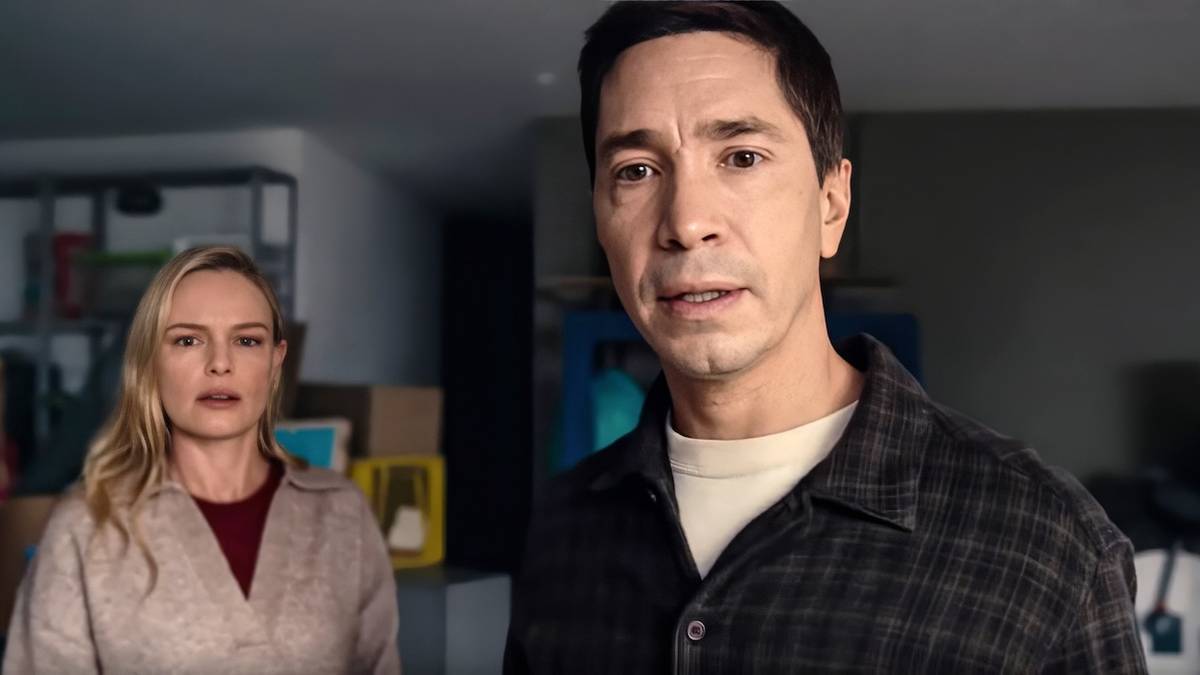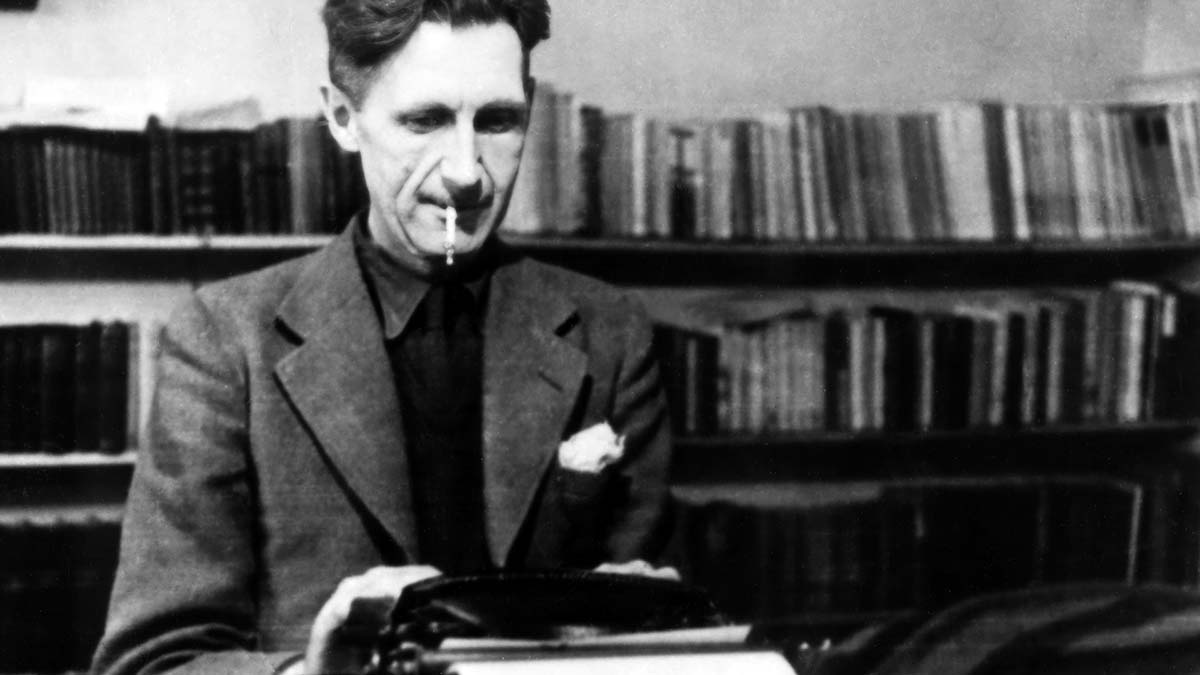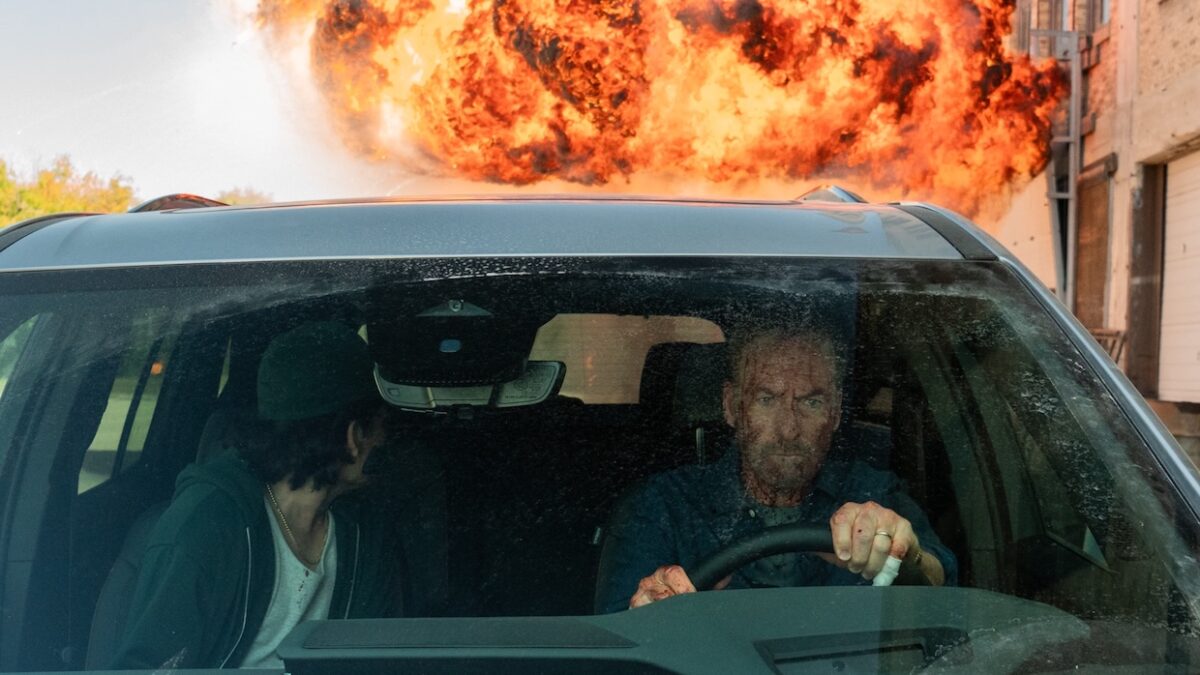
Interview: DP Callan Green on Nobody 2
Aug 29, 2025
Bob Odenkirk (right) in Nobody 2
In Nobody, a government assassin turned middle-aged family man (Bob Odenkirk) breaks out of his humdrum suburban existence by instigating an escalating feud with the Russian mob. In the film’s sequel, out in theaters, a burnt-out Odenkirk now needs a break from his return to espionage. So, he packs up the family and heads to Plummerville, a run-down water park where he spent one of his happiest childhood summers.
Action maestro Timo Tjahjanto (The Night Comes for Us) takes the directorial reigns for the follow-up, with New Zealand cinematographer Callan Green behind the camera. Green spoke to Filmmaker about the challenges of shooting on water and in a hall or mirrors, landing on the Lord of the Rings trilogy at 18 and how he discovered he wanted to be a cinematographer during a teenaged acting gig on a peanut butter commercial.
Filmmaker: One of the first jobs in your credits is as a 2nd AC on the Lord of the Rings trilogy. How did that come about?
Green: I grew up in a suburb just outside of Wellington, New Zealand with my mum. We didn’t have much money and times were tough, but when I was about six years old she bought me a second-hand Hanimex stills camera. She could only afford to develop one roll of 35mm film a month, so I learned early on to be frugal with the shutter button.
Later, my brother started acting in commercials and stage plays, which I thought was amazing. I decided to try acting myself and landed a Sanitarium peanut butter commercial at the age of 13. It was on that set that I first saw a film camera in action, an Arriflex BL with a 1000’ magazine and a huge 18–100mm Century zoom. That was the moment I knew I wanted to become a cinematographer. On one of the last days, I asked a grip how to get into the industry, and his answer was a gruff, “A lot of hard work, mate.” I was sold.
Five years later, I had left high school and was working as a 2nd AC in Wellington on commercials and music videos when a local focus puller rang and asked if I wanted to come onto main unit for The Lord of the Rings. Of course I said “Yes!” Three months later I was on set for day one of what became the most insane experience a budding cinematographer could ever wish for. I was under-experienced, but I worked as hard as I could and learned quickly. I had five different stocks and a total of 38 magazines to load between six camera bodies, no trainee and my on-set loader was always focus pulling the fourth camera. It was nuts, but I loved every second.
I turned 19 in the second week of shooting and was 21 when we wrapped additional photography for the third film. After LOTR I kept working as a 2nd AC but wasn’t sure about climbing through the ranks of 1st AC and operator. So, I applied to the Australian Film, Television and Radio School (AFTRS), was accepted at 23 and by 25 had graduated and begun my career as a director of photography.
Filmmaker: Walk me through how you wanted to differentiate the look of the sequel from the original Nobody.
Green: When I first came aboard, I asked myself how much the sequel should match the original. Pawel Pogorzelski shot the first Nobody with a blue/grey, wintry quality that perfectly suited Hutch’s “suburban husband” persona. Nobody 2, however, was always going to be a summer film—a mischievous cousin to the original. That gave us freedom to evolve the look, though the season also created its own logistical challenges. Shooting in Winnipeg meant confronting one of the most extreme climates I’ve ever experienced. Locals told stories of -40°C winters, but when we arrived we were dealing with +35°C (95 degrees Fahrenheit) summer days. Those swings shape everything from crew planning to light control. Blackout tenting for day-for-night interiors turned into ovens, while night shoots in the woods meant mosquitoes and the occasional tick check between setups. The upside was long summer days with hours of natural light, and the contrast to the first film’s icy palette was built into the landscape itself. Timo and I leaned into contrast: summer instead of winter, mischief instead of menace, but still grounded in grit. We wanted a world that felt like a cheerful waterpark resort on the surface, with a darker underworld lurking beneath. Color was key. Wherever possible, we pushed bold, vibrant lighting schemes that kept the energy playful and dangerous at the same time.
Filmmaker: How much did the original script you read spell out the fight sequences?
Green: The script for Nobody 2 gave a clear sense of location and tone for each set piece but wasn’t prescriptive about every beat of action. Greg Rementer, our stunt coordinator, would then build the fights. He and his team rehearsed for weeks, both with his stunt crew and with Bob, before we arrived in Winnipeg. They’d record each setup, edit them together and deliver a full pre-vis of the sequence. By the time we stepped on set, we had a blow-by-blow map of every fight. Greg’s team did this for every action sequence, which gave us an incredible foundation. From there, Timo and I built the camera and lighting language around the choreography, making sure the visuals punched as hard as the action. It was always up to us to make the stunt pre-vis even better. Once you’re in the real location, with Michael Diner’s production design and the lighting layered in, the sequences always expand beyond the previs and take on a new level of cinematic energy.
Real walls, ceilings, reflections and a larger camera package all had to be accounted for. That’s where collaboration came in: Timo, Greg, Michael and I would walk the space together, test how the stunt-vis translated and then adjust camera positions, lensing or even set design to preserve the energy. Greg and the 87North crew draw from a core group of world-class stunt performers for each project. If a film calls for driving, they’ll crew up with the best drivers available. They also carefully select doubles and lookalikes, matching ages, ethnicities and genders, so the fights cut seamlessly without breaking the illusion. We shot on the Arri Alexa 35 with Panavision T Series anamorphics, which gave us cinematic scope while allowing us to be nimble enough for stunt work. The camera team created a range of custom builds tailored to specific needs, keeping the energy of the stunt-vis intact but giving us the freedom to adapt in real locations. So, the stunt-vis was never a restriction. It was a launchpad, and it was always our job to elevate it once we added camera, lighting and design.
Filmmaker: How was shooting in Winnipeg?
Green: Winnipeg was an amazing place to shoot. The people are super friendly, the variety of locations is epic and the city has such a strong character. On my rare days off, I loved playing golf with Colin Hanks. The city’s history as a railway hub, built from a rich tradition of trains and trade, gave us so much texture to draw from. The carnival was a particularly fun challenge. There were small existing elements, but most of what you see on screen—the rides, stalls and attractions—had to be brought in and designed by Michael Diner’s team. As luck had it, a traveling carnival was finishing its season in Winnipeg, and we were able to hire them and most of their rides. It lined up perfectly with our schedule and gave us an authentic base.
The waterpark was a real place called Lilac, about an hour north of Winnipeg. We transformed it into a tiki-style environment and added our own lighting to heighten the world. By bringing the carnival into the Lilac car park, we expanded the footprint enormously and staged most of the final act in a single location, a huge advantage both creatively and logistically. Timo and I tried staying overnight nearby to avoid the commute, but the mosquitoes were so relentless we didn’t sleep a wink. After that, the drive was worth it.
Filmmaker: What was the process behind choosing the Alexa 35 and the T Series?
Green: On the first Nobody, Pawel used Hawk V-Lites, which have a slightly older, vintage character. For the sequel, we wanted to honor that anamorphic DNA but move toward something more modern and versatile. The T Series gave us that—still cinematic and full of character, but cleaner, sharper and better suited to fast-paced stunt work. Alongside the anamorphic primes, I also like to work long zooms into the mix. They add a different texture and allow perspective shifts that primes can’t, especially useful in action scenes where you want to punch in without breaking the flow. Cutting between an intimate anamorphic close-up and the compression of a long zoom gave us extra energy and unpredictability. We paired that with a custom LUT created by Dave Hussey at Company 3, which leaned into the film’s playful summer palette while holding onto an underlying grit. It felt right for Hutch’s world—rich saturation, bold contrast and just enough darkness under the surface.
Filmmaker: Let’s finish up by breaking down some scenes. How about the opening keycard job montage, where Hutch has to battle through an elevator, a kitchen and a parking garage?
Green: We had so much fun designing and shooting that. Each vignette had its own visual identity, matched to the protagonists. The Brazilians carried their national colors. For the Corsicans, whose flag is largely white, we leaned into a burnt orange and teal combination. Camera movement was designed to feel dynamic and propulsive, keeping the montage alive from beat to beat. Lighting helped make the transitions seamless, especially when cutting between stage builds like the elevator and real Winnipeg locations. One favorite setup was Colin Salmon and Bob Odenkirk in the barbershop. We began with blackout tenting, but later pulled it away to reveal the huge window and street life outside, instantly opening the space. Second unit, directed by Greg Rementer and DP’d by Len Petersen, also played a big role. They took on much of the garage coverage, since main unit simply didn’t have enough time in our two-day window. Their work slotted in seamlessly and really helped complete the sequence.
Filmmaker: And the arcade fight?
Green: Like the elevator and later the hall of mirrors, it began in a real Winnipeg arcade before shifting to a stage set where we could choreograph action and control lighting. It was our largest set, but once filled with machines, flashing screens and a full-sized basketball game, it quickly felt compressed and crowded. That worked in our favor. The fights became more contained and intense, but it also meant careful camera placement to keep geography clear. Lighting was built around full-spectrum LED rope lights, integrated into the set for complete DMX control. We could chase the lights in different directions depending on who the camera followed, adding momentum and orientation, a trick we also used in the hall of mirrors. One of my favorite moments in the entire film happens here: Hutch sees a security guard slap his daughter. Bob plays it beautifully, and you feel the whole room shift and the color and chaos suddenly fuel his violence. That moment was the emotional anchor of the sequence. We also designed the fight to feel like a oner. Using a series of invisible cuts—often when Hutch passed a game machine—we stitched the real location to the stage set, creating the illusion of a continuous shot and amplifying immersion.
Filmmaker: One of my favorite sequences is the duck boat fight between Hutch and a couple of the crooked sheriff’s goons.
Green: That was one of the trickiest sequences to plan. We knew it would take about five days on the water—three with main unit, two with second. At first we explored shooting on a backlot with a gimbal-mounted duck boat and VFX backgrounds, which would have given far more lighting control, but budget ruled that out. So, we committed to a real river. The boat would run up and down, turning every ten minutes or so. That created headaches for continuity, but sometimes you just go with the flow. The boat we used had a solid metal roof, which cut too much natural light and made the interiors heavy. I asked the art department to remove it and replace it with semi-opaque Perspex in a duck-yellow tone. It gave us soft, even daylight and a subtle warmth that suited the sequence.
I spoke with my gaffer, John Clarke, about having a lighting boat or roof fixtures, but because the fight required 360-degree coverage, any external rig would have been in-shot. We went with battery-powered lights on board for close-ups, plus negative fill. It was a naturalistic approach, letting daylight do the work while shaping it where needed. We also had three support boats lashed together as a floating base for gear, wardrobe, props and monitors. It was like a convoy, moving with us up and down the river.
We got lucky with the weather. It only rained once, briefly one morning. It could easily have been a logistical nightmare, but instead we kept continuity across the whole sequence. No matter how much we had rehearsed, nothing prepares you for actually being on the boat out on the river. Space was incredibly tight, and simply getting cast, crew and gear on and off made it one of the most challenging environments I’ve worked in. Still, I’m proud of how it turned out.
Filmmaker: For the finale, you’re in the amusement park at night.
Green: Our biggest and most ambitious sequence. By this point Hutch’s world had tipped fully from playful into dangerous, so we leaned into contrast and color to push that heightened tone. Shooting at night gave us the freedom to create something stylized yet grounded—carnival lights for atmosphere layered with practicals and big units to sculpt the action. The hall of mirrors was a highlight. Michael Diner’s team built mirrored panels with integrated LED rope lights, giving us full control. We used the lights to chase in different directions depending on Hutch’s movement, creating subconscious orientation for the audience amid the reflections. Reflections were the big technical hurdle. We built a two-way mirror into the set so we could hide the camera behind glass, and our A-camera operator Matt Schween even wore a full black “ninja suit” so he disappeared into the glass. Combined with careful blocking and a touch of motion blur, it allowed us to keep the camera deep in the fight without breaking the illusion.
For the park itself, we rigged eight massive lighting cranes around the perimeter, each with eight Creamsource Vortex fixtures, plus large HMIs and a mover light for accents. We filled the entire park with haze and fog, adding depth and atmosphere so every beam of light carved into space. Color was another key. I spent pre-light with my DIT, Daniel Quesnel, and our lighting desk operator cycling through looks until we landed on a rose and green-blue palette. The result was a surreal, glowing battleground of light and shadow perfectly suited to Hutch’s mayhem.
Filmmaker: Any fun stories about the retro waterpark commercial that Hutch shows his family before their trip?
Green: That was one of those little gems that let us have fun outside the main narrative. We shot it at the Lilac waterpark with extras dressed in full 1980s clothing. To nail the period feel, I leaned into the hallmarks of vintage ads: bold colors, soft diffusion, slightly overexposed highlights and VHS texture. I chose a 4K Sony Handycam, which let us exploit its optical zoom, pulling off a classic snap-zoom from a close-up at the top of the tower all the way out to a wide in seconds. It instantly gave us that charmingly clunky ’80s look. Second unit shot the commercial while main unit was covering other waterpark material. They nailed the tongue-in-cheek energy. For Hutch, though, it wasn’t just a gag. The idea was that he used to go there with his brother and dad as a kid, so there’s poignancy in him trying to share that nostalgia with his own family. What plays as cheesy on the surface carries an undercurrent of yearning for something simpler, and that’s why the moment lands. It was a small beat compared to the big fights, but I love how it turned out.
Publisher: Source link
Erotic Horror Is Long On Innuendo, Short On Climax As It Fails To Deliver On A Promising Premise
Picture this: you splurge on a stunning estate on AirBnB for a romantic weekend with your long-time partner, only for another couple to show up having done the same, on a different app. With the hosts not responding to messages…
Oct 8, 2025
Desire, Duty, and Deception Collide
Carmen Emmi’s Plainclothes is an evocative, bruising romantic thriller that takes place in the shadowy underbelly of 1990s New York, where personal identity collides with institutional control. More than just a story about police work, the film is a taut…
Oct 8, 2025
Real-Life Couple Justin Long and Kate Bosworth Have Tons of Fun in a Creature Feature That Plays It Too Safe
In 2022, Justin Long and Kate Bosworth teamed up for the horror comedy House of Darkness. A year later, the actors got married and are now parents, so it's fun to see them working together again for another outing in…
Oct 6, 2025
Raoul Peck’s Everything Bagel Documentary Puts Too Much In the Author’s Mouth [TIFF]
Everyone has their own George Orwell and tends to think everyone else gets him wrong. As such, making a sprawling quasi-biographical documentary like “Orwell: 2+2=5” is a brave effort bound to exasperate people across the political spectrum. Even so, Raoul…
Oct 6, 2025
